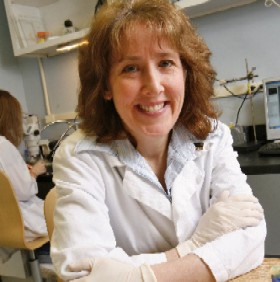Blood Flow and Neuroscience
 Kinesiology professor, Dr. Robin Looft-Wilson, is featured as part of the neuroscience program in the Summer 2007 issue of Ideation.
Kinesiology professor, Dr. Robin Looft-Wilson, is featured as part of the neuroscience program in the Summer 2007 issue of Ideation.
The following is an excerpt from the article titled "Corpus Collossal".
If the brain is to work well, it needs a steady supply of oxygen-bearing blood. A problem in the blood supply leads to a problem with the brain.
"Many brain disorders are actually vascular disorders," Robin Looft-Wilson points out. "Many dementias are caused by vascular disease in the brain. Stroke is a vascular disease, it's not a brain disease."
Looft-Wilson is an assistant professor in the kinesiology department at William and Mary and insists that she's "a physiologist and not exactly a neuroscientist." Nevertheless, she is presiding over important work in the neuroscience program regarding the understanding of how blood vessels work and how their workings contribute to the health of the brain. One of the projects she is working on concerns a condition known as hyperhomocysteinemia, the excess of a certain amino acid in the bloodstream.
"Hyperhomocysteinemia is a very common cardiovascular risk factor in the population," Looft-Wilson said. "It's an independent risk factor like high cholesterol and everybody's heard about cholesterol. And hyperhomocysteinemia is typically the result of low B vitamins in the diet, which is actually very common."
Hyperhomocysteinemia, she explained, tends to increase oxidative stress--that biological imbalance we try to counter by consuming foods rich in antioxidants. Oxidative stress is involved in the physical manifestations of the aging process, as well as a number of disease states, notably Alzheimer's and atherosclerosis--hardening of the arteries.
"High oxidative stress makes blood vessels not function properly. It interferes with lots of chemical reactions," she said. A healthy blood vessel, she explains, produces plenty of that critical and versatile biological messenger, nitric oxide. Looft-Wilson knew that hyperhomocysteinemia reduces nitric oxide availability, but how?
She and a group of students working in her lab ("They are all neuroscience majors.") recently concluded a study that shows hyperhomocysteinemia alters the regulation of endothelial nitric oxide synthase (eNOS), an enzyme that triggers production of nitric acid. They wrote up their findings in a paper--with four undergraduate co-authors--for a journal and also presented at a physiology conference in Washington, D.C., that attracts thousands of scientists, of whom only a hundred or so are undergraduates."














